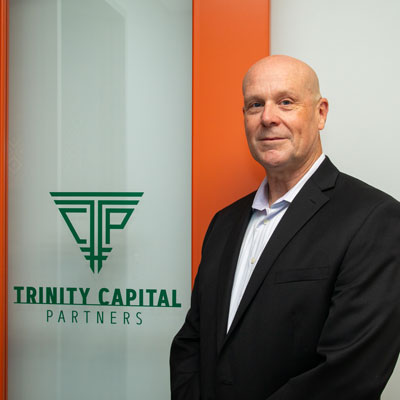The Business Banker’s Guide to Alternative Financing

Introduction: What is alternative financing?
Offering quality financing products that will attract reputable clients is key to your success as a business banker, especially during the economic turmoil brought on by recent events. As consumers are provided with more loan options from more lenders than ever before, staying competitive is essential. Alternative lending is a great way to do this.
To set yourself apart from the competition and help more business loan candidates, consider finding an alternative lending partner you can confidently refer clients to and incorporating SBA loan programs into your business.
In this guide, we’ll explore the ins-and-outs of alternative financing for business bankers, including types of loans and what to look for in an alternative lending partner.
Why offering alternative funding can help grow your clientele
As a business banker, you understand the power—and importance—that the right funding can have on the growth and success of a business. You also know firsthand how difficult it can be for some businesses to meet traditional lending requirements.
When you’re unable to extend funding to a business because they don’t yet qualify, it’s important to part ways on good terms. Rather than deny their application and move on, you can connect them to a reputable alternative funding source so they can continue to meet their growth goals. If they pursue your alternative lending recommendation and qualify for the loan they need, they are more likely to return to you when they can qualify for conventional funding.
Instead of losing out on a potential client because of lending requirements, you can help a company get on the right path while building your future business. When it comes to growing your business clientele, loyalty and goodwill go a long way.
Who are the responsible alternative lenders?
Turning potential business banking clients over to a referral should be a thoughtful action. On the one hand, you want to help in any way you can while building the potential for future business opportunities; and on the other hand, you want to maintain your reputation as a reliable and honest business banker.
To maximize your client’s chance of success and minimize the risk of referring someone to a dishonest lender, you need to understand the alternative lending landscape. Here are the key players:
Community Development Financial Institutions (CDFI)
CDFIs are private financial organizations dedicated to responsible, affordable lending for low- and moderate income communities and people without access to financing.
To become certified, organizations must meet strict qualification standards to ensure their service aligns with the mission of a CDFI. One of the more unique criteria for CDFIs is that they must provide development services in conjunction with financing products. Business owners who secure funding through a CDFI have access to resources, mentorship, and education aimed at helping their business achieve financial health.
Business bankers often feel comfortable sending their clients to CDFIs due to the educational component and the likelihood that they will return when they’re able to qualify for conventional lending.
Certified Development Company (CDC)
The Certified Development Company program is run by the U.S. Small Business Administration (SBA) to administer its 504 loan program. The program was created to help provide financing to businesses that don’t yet qualify for traditional funding.
A Certified Development Company (CDC) is a nonprofit corporation that promotes economic development within its community through 504 loans. CDCs are certified and regulated by the SBA, and work with SBA and participating lenders (typically banks) to provide financing to small businesses, which in turn, accomplishes the goal of community economic development.
CDCs partner with traditional banks that want to expand their pool of potential small business loan customers without taking on the added risk, as 504 loans are backed by the United States government.
Online Lenders
As financial technology continues to become more prevalent, so do online lenders. Instead of turning away people who aren’t yet able to qualify for traditional funding, you can point them to a reputable online lender.
Just like any other referral, it’s important to diligently vet an online lender before recommending it to a client, as many offer unaffordable rates for short-term loans. Ultimately, it’s your reputation on the line—so do your due diligence. Not only should the online lender be reputable and offer affordable rates and terms, but they should also have processes in place to help improve your client’s financial outlook. To increase the likelihood that your client will return to you when they can qualify for a traditional loan, make sure the online lender is not a bank replacement, but an alternative funding resource that can be used temporarily.
Benefits of offering alternative financing options
As we touched on earlier, there are benefits to offering alternative financing options to your business banking clients—not only for them, but for you.
Here’s how your business can benefit from referring clients to alternative lenders:
- Help close deals you’d otherwise lose
- Remain competitive
- Retain customer loyalty
- Keep the deposit relationship
- Build future business
The truth is, most people who are denied conventional funding don’t know where to turn next. They look to you and your bank as a trusted ally, even though you’re unable to extend financing to their business at that moment in time. Instead of sending them on their way to navigate the complexities of alternative financing alone, you can be the source of support they need during this vulnerable time. This will not only help establish a strong relationship and build rapport, it will lead to future revenue for your business.
By referring a would-be business banking client to a CDFI or CDC, they’ll receive the funding they need to grow, and the resources and support they need to be successful. When they’re ready to qualify for a conventional bank loan, they’re more likely to return to the person who helped them when no one else could.
Alternative financing products
Now that you’re familiar with who the players are and the benefits of referring clients to alternative lenders, let’s explore a few loan programs offered through the SBA that can help your clients get the funding and support they need.
SBA 7(a) and Community Advantage loan programs
The SBA introduced the 7(a) loan program as its primary way to provide financial assistance to small businesses. The Community Advantage (CA) loan is a unique type of 7(a) loan available to businesses working in under served communities.
SBA 7(a) loans are offered up to $5 million with reasonable interest rates that are negotiated between the lenders and borrowers. 7(a) loans are great options for businesses that are less risky from a lender’s perspective.
Structured similarly to 7(a) loans, SBA Community Advantage loans are offered up to $250,000 with a max interest rate of Prime +6%. Due to their capped loan size and higher interest rates, a Community Advantage loan is a great option for startups and businesses that carry inherent risk.
CDCs, microloan program intermediaries, Intermediary Lending Pilot (ILP) program intermediaries, and non-federally regulated CDFIs can all be SBA 7(a) and CA lenders.
SBA 504 loan program
The SBA 504 loan program was designed to provide economic development opportunities to businesses so that they can grow and create jobs for others in their communities. The program has provided more than $50 billion in below-market rate funding and helped create more than two million jobs in the United States.
Through the 504 loan program, businesses can receive long-term, fixed-rate financing with low down payments from SBA’s community of CDC partners.
How 504 deals are structured
SBA 504 loans have a unique financing structure, which can be broken down into three components: the lender’s portion (50 percent), the SBA’s loan backing (40 percent) and the borrowers’ down payment of just ten percent. Due to the relatively low down payment requirements, 504 loans are ideal for borrowers who are financing bigger purchases like large machinery (i.e assembly lines) or owner-occupied commercial real estate.
How funds can be used
504 loans can be used to purchase new land and improvements, constructing or renovating an existing facility, purchasing large machinery, and refinance debt in connection with business expansion. Since these loans are often backed by collateral, they’re less risky than other unsecured loans like working capital packages.
It’s important to note that 504 loans can’t be used for working capital, purchasing inventory, consolidating debt or refinancing debt that isn’t connected to business expansion.
Identifying 504 loan opportunities
Aside from making sure your client’s needs align with how 504 loans can be used, there are other eligibility requirements that will need to be met:
- Business must be for-profit
- A tangible net worth less than $15 million
- Average net income of $5 million or less (after federal income taxes)
- What to look for in an alternative lending partner
Partnering with the right alternative lender can mean the difference between building up trust and rapport—and losing it. Which is why it’s so important to know what to look for in an alternative lending partner.
Ideally, you’ll want to build up a solid list of reputable lenders that you feel confident in. That way, when a business owner comes in for bank financing and can’t-yet-qualify, you’ll have already vetted potential alternative lenders who can help support your client’s goals.
Transparency and honesty
This one may seem obvious, but it’s the number one quality to look for in any financial partner. Visit their website, subscribe to their email newsletter, and read their blog. Here are some questions to ask yourself as you peruse their website:
- Are they committed to providing value outside of basic advertising?
- Do they list their rates, fees, and process in plain, clear language on their website?
- Do they seem like they have something to hide?
- Do they treat their clients fairly?
- Do they honor the relationship as a partner?
- Product mix
Next, it’s important to look at whether they offer a product mix that can best serve the needs of a business owner. At the same time, however, you’ll want to be careful not to refer a potential client to an institution that can replace your future banking relationship. A healthy, varied product mix demonstrates their commitment to client success, but a full suite of business banking products can potentially replace the need for a traditional bank in the future.
Expertise and track record
When choosing an alternative lending partner, it’s important to choose one with extensive expertise and a great track record. Not only to benefit your clients, but to help you handle important tasks like managing CRA credits.
Rather than head to an online review website, ask your trusted colleagues for references of alternative lending partners. Ask questions about what their experience has been like, whether they see referrals eventually come back “home” when they’re able to qualify for traditional financing, and if they’re easy and pleasing to work with.
Conclusion
By providing alternative loan products, incorporating SBA programs into your business and making connections with solid alternative lending partners, you can rise above the competition, secure future business banking clients, and reinforce your reputation in the banking industry.

